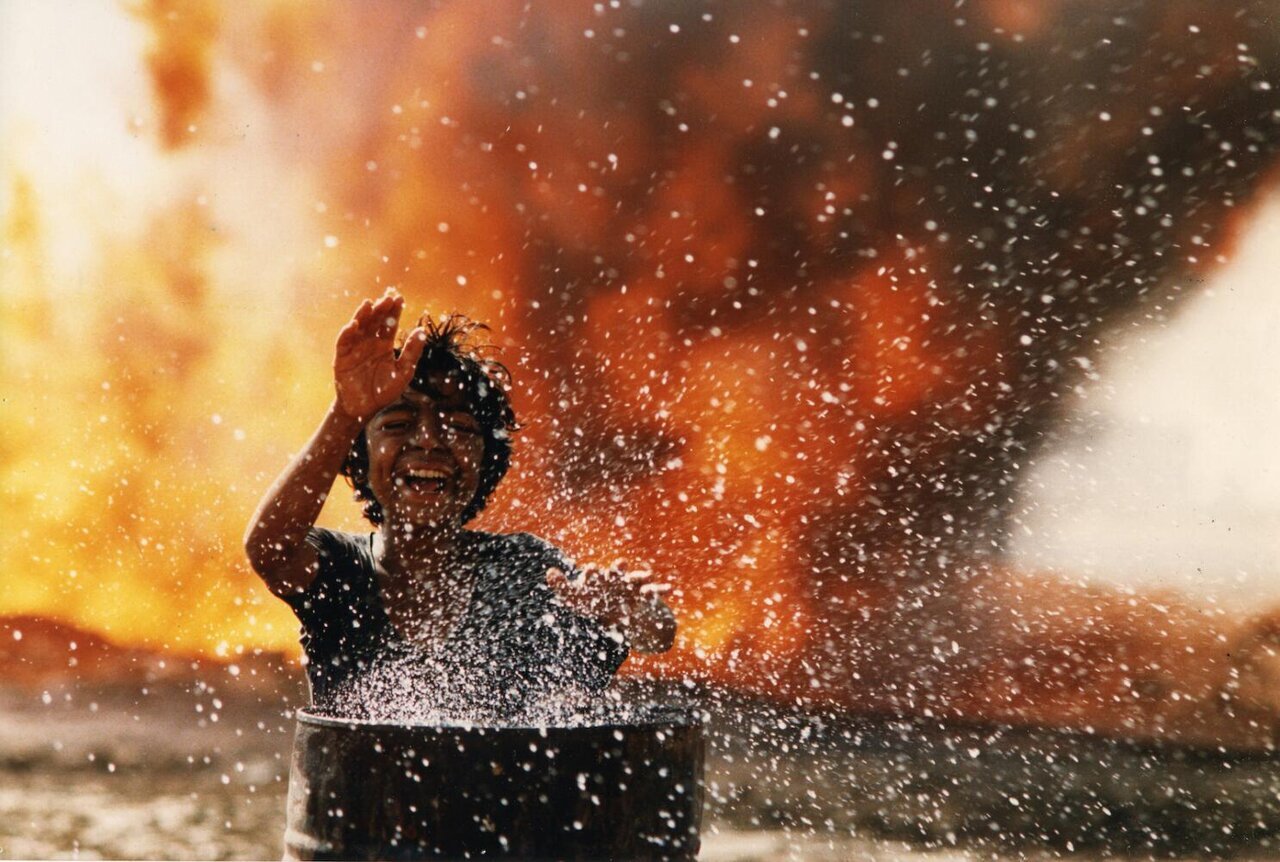IAF cinematheque to screen Amir Naderi’s “The Runner”

TEHRAN- The Cinematheque of the Iranian Artists Forum (IAF) will screen a restored version of Amir Naderi's "The Runner" on Wednesday, marking the 40th anniversary of the film's production.
Following the screening, Iranian critics Reza Saemi and Maziar Fekri Ershad will lead a discussion and review the movie.
Additionally, a video conversation between Amir Naderi and Ramin Bahrani will be shown, featuring Naderi's recollections from the film's production and his thoughts on the impact of "The Runner" on Iranian filmmakers who have followed in his footsteps.
The conversation was conducted in English and has been translated and subtitled exclusively by the IAF.
Produced in 1984, “The Runner” is widely regarded as an Iranian new wave masterpiece. The film follows an illiterate, but resourceful, 11-year-old orphan, who lives alone in an abandoned tanker in the Iranian port city of Abadan. He survives by shining shoes, selling water, and diving for deposit bottles thrown overboard by foreigners, while being bullied by adults and older kids. But he finds solace by dreaming about departing cargo ships and airplanes and by running, seemingly to nowhere.
Through the use of striking imagery, particularly the fire and water imagery which symbolizes the Iranian people's struggles, the film provided a poignant commentary on the political situation at the time.
The film is often praised for having one of the best child performances of all time with Madjid Nirumand.
Inspired by Naderi’s own childhood, “The Runner” is among the films that first drew the world’s attention to the new Iranian cinema.
Furthermore, "The Runner" was also a milestone for Iranian cinema in the global arena, as it was the first film to be presented at foreign festivals after the Islamic Revolution. The film's lasting impact and recognition in the international film community speaks to the immense talent and impact of Iranian filmmakers and their commitment to offering a nuanced, complex portrayal of Iranian society and culture.
It was shown in Venice and London, though not released in the U.S. until 1991, when it opened at Film Forum. The new restoration features brand-new subtitles by Maryam Najafi and Bruce Goldstein.
The film is often compared to De Sica’s “Shoeshine” and “The Bicycle Thief” and other great works of Italian Neo-Realism, Bunuel’s “Los Olvidados”, Héctor Babenco’s “Pixote” and Truffaut’s “The 400 Blows”.
The Museum of Modern Art held a retrospective of Naderi’s work in 2018. Curator Dave Kehr wrote, “Naderi spent his formative years on the street. A job working in a movie theater led him to discover his true homeland, the cinema.”
“Naderi has remained a citizen of that refined world ever since, pursuing his passion for filmmaking around the globe with no regard for physical borders or language barriers,” he added.
Nirumand’s performance in “The Runner” was named #12 in a list of “The 25 Greatest Child Performances in Cinema History” on the film site Taste of Cinema. The Los Angeles Times called it “the greatest performance ever given by a child.”
Born in Abadan in 1946, Amir Naderi is a renowned Iranian film director, screenwriter, and photographer. He developed his passion for cinema through his childhood fascination with photography and film criticism. His early works were influenced by the urban experience and everyday life, as well as the aesthetics of Italian neorealism. Naderi's films often explored the struggles of working-class people, as seen in his debut film "Goodbye Friend" (1971).
After the Iranian revolution, Naderi continued to make films, including the critically acclaimed "The Runner" and “Harmonica”, which gained international recognition and critical acclaim.
Photo: Majid Nirumand acts in a scene from “The Runner” by Amir Naderi.
SAB/
